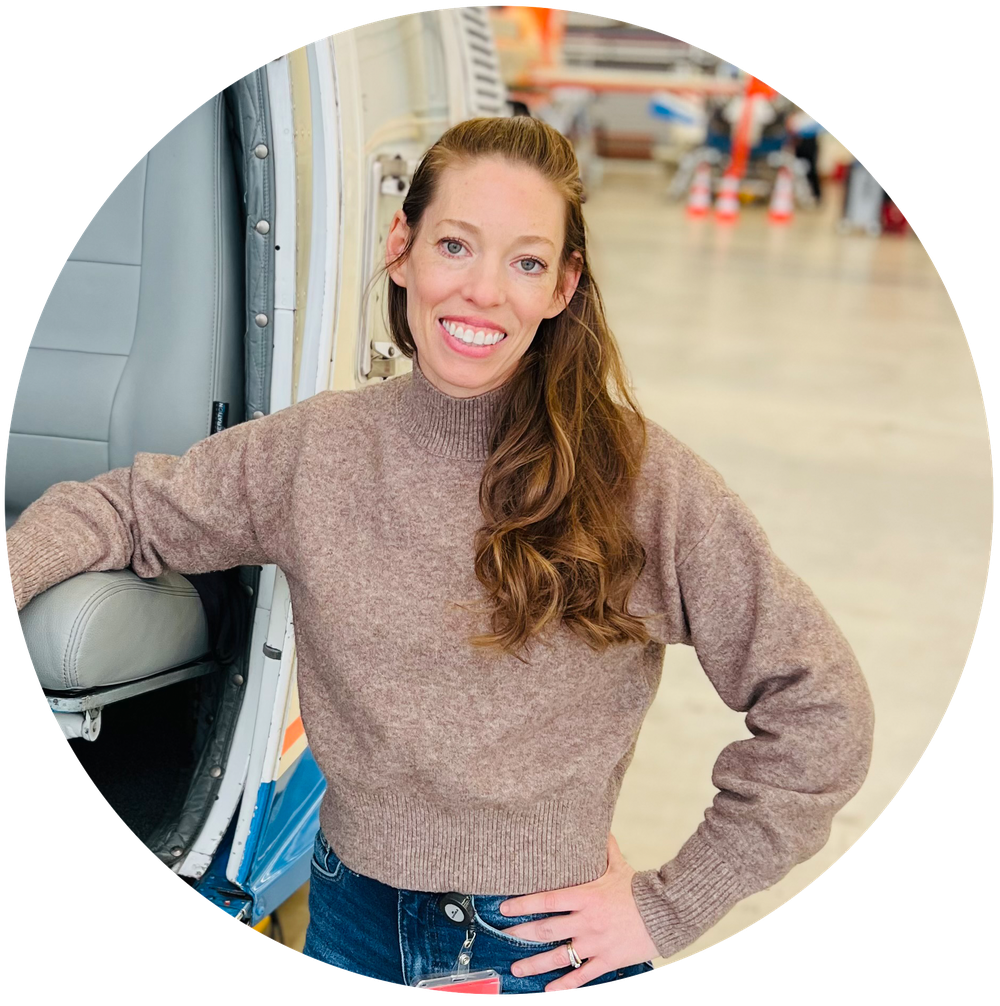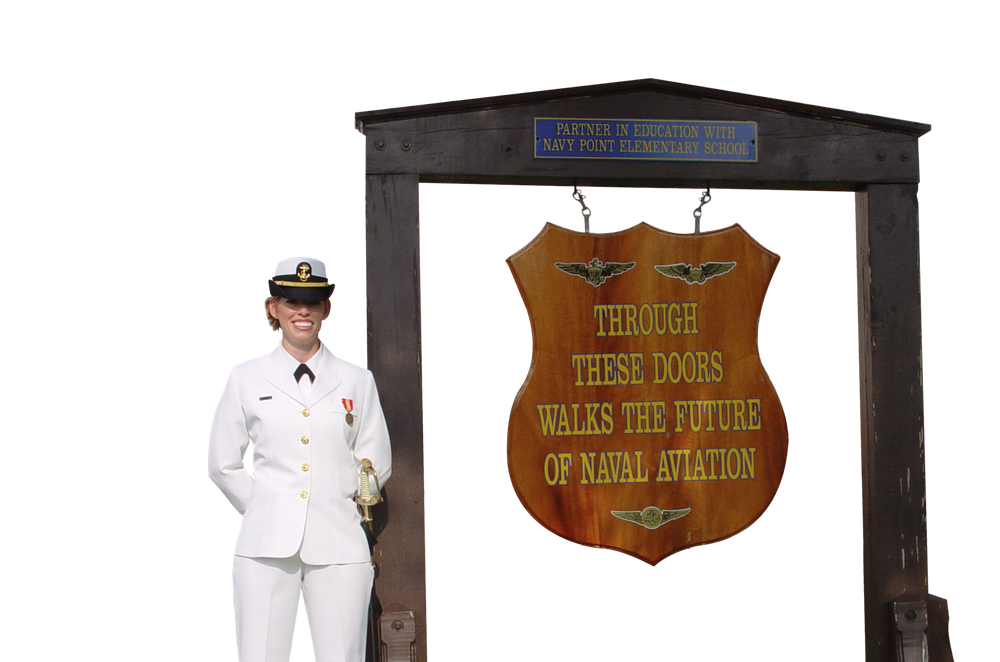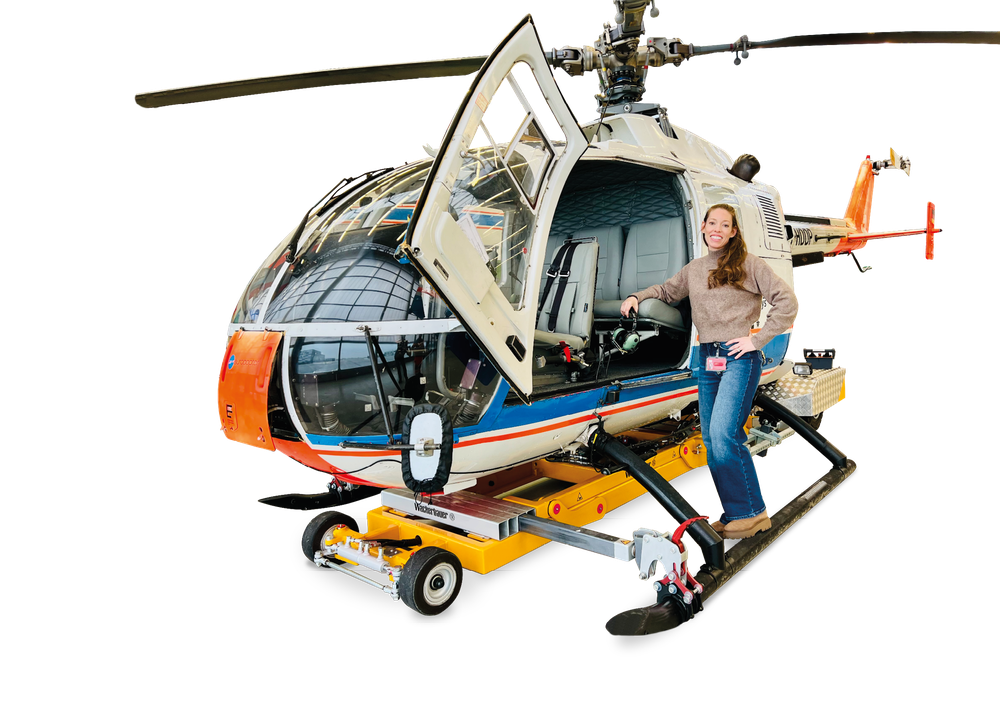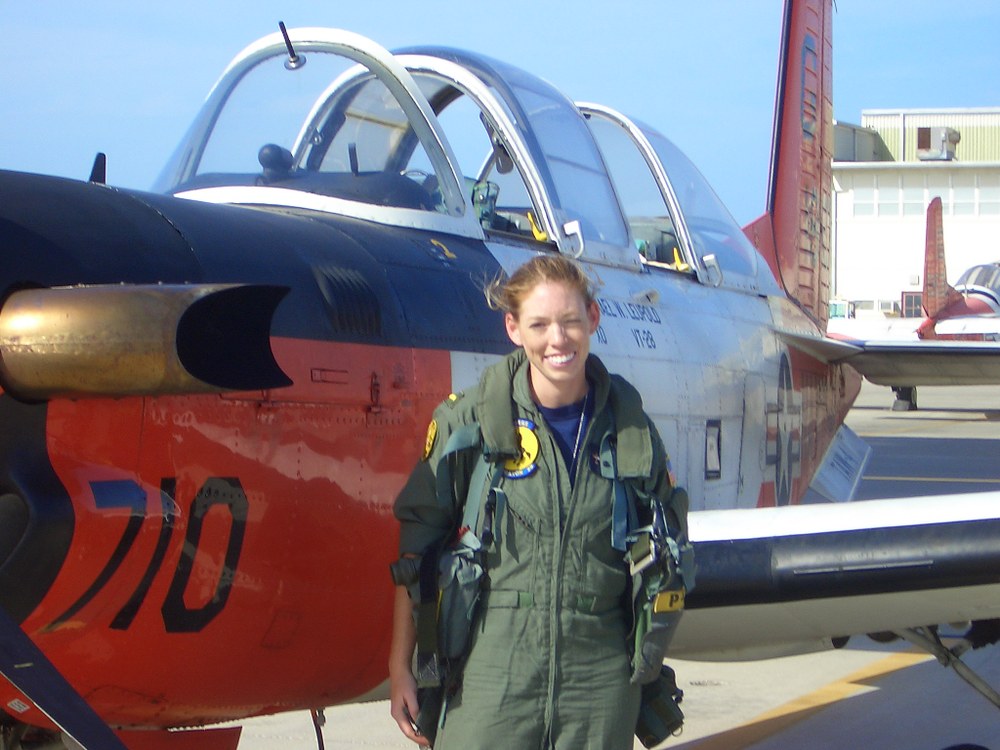The naval aviator

This episode of the FORSCHtellungsgespräch podcast was produced under rather unusual conditions: at the ILA Berlin 2024 in June, on the tarmac where all kinds of aircraft and helicopters were on display. Equally exceptional is the career of our guest interviewee Elizabeth Buron. She arrived in Braunschweig as a trained US military pilot and is now working at DLR Flight Experiments Facility, where she discovered her passion for helicopters.
Elizabeth, you have quite an unusual background. Where are you originally from?
I grew up in San Diego, right at the bottom of the US west coast. That is also where I studied biology, because I originally wanted to become a doctor. During my studies, I worked in a laboratory, among other things, but over time I came to realise that it wasn't for me. I spent a lot of my semester breaks backpacking and working abroad to get inspiration.
And then your life took a decisive turn: your father was a navy pilot, and you found that fascinating even as a child …

Privat
Yes, we often watched the film 'Top Gun' together when I was a child. But my father didn't want me to join the navy. "It's too dangerous," he said at the time. He knew from his own experience how risky it was to land on an aircraft carrier! Somehow, though, I was destined to become a pilot …
So, you simply "made it happen"!
Exactly! I paid for a private pilot's licence from my own pocket and then applied to become a pilot in the US Navy. When I was notified that I'd been accepted, I had a mere two weeks to prepare for this new chapter in my life.
What did you learn at naval flight school?
Among other things, I learned formation flying and aerobatics – manoeuvres in the air – in a small plane with a turboprop engine, a T-34C. I had a great deal of respect for manoeuvres like the loop. Once you pull them off, it's a real boost to your self-confidence! Additionally, we covered standard training topics like take-off and landing, tactical warfare, aircraft emergency procedures and survival training. Eventually, I was allowed to fly my final aircraft, the P-3 Orion. As a pilot, I led a crew of ten people, which I really enjoyed.
Let's take a small detour … how did you end up in Germany?
During my pilot training, I met a man from Germany who was also a pilot. When we got married, we decided that we would focus on my career for ten years and then on his. In 2012, we moved to Germany, where I worked at NATO AWACS in reconnaissance – not as a pilot, as that wasn't possible due to my pregnancies and two children – but on the ground in data evaluation and later in 'Operations' and 'Plans and Programs'. In 2016, my military contract with the US expired, and we moved to Braunschweig.
And then DLR posted a vacancy …
That's right! I first heard about DLR in Braunschweig and saw the advert for the DLR-Facility Flight Experiments – it was actually at a job fair – and thought: Yes, that could be a good fit given my experience! Although by then I had completed several German courses, the two-hour interview was a real challenge. In the end, it worked out!
Tell us, what exactly do you do at DLR now?
I'm the project manager for DLR's BO105 and EC 135 ACT/FHS helicopters, coordinating requests for experiments on these two aircraft. In a way, I act as the interface between the researchers, engineers, pilots, Quality management and external parties – particularly the German Federal Aviation Office, which must approve all modifications and installations before the experiment setup is tested, first on the ground and then in the air.

Clearly, you can't just go to the hardware store and say, "Okay, I'll just get these screws and fit them" …
That's right. Every modification has an impact on the subsystems – structure, electronics, communication, navigation and so on. We have to make sure that everything works smoothly and that there is no risk, which is a complicated, lengthy and costly process.
Every year, you manage up to eight research projects on the helicopters. Which are you currently most excited about?
KOBOL comes to mind immediately. The aim of this project is to improve and speed up helicopter rescue landings, for example on motorways. We have developed a system in which the helicopter and automated vehicles on the ground agree on a landing site and the vehicles keep it clear. We have successfully tested the entire system and are now developing it further. I find it particularly exciting to work on developing joint solutions together with other disciplines from aviation and ground transport.
Let's take a look into the future: the BO105 has just turned 50, and will continue to fly for even longer. What are your plans for the 'senior' helicopter?
The BO will undergo major upgrade work next year and be fitted with new rotor blades equipped with sensors to provide us with valuable data about air turbulence. Additionally, a nose boom will be integrated, allowing us to measure atmospheric data, airspeed and other relevant information. Many institutes have already requested projects for this new configuration, so we're fully booked for the time being.
Thank you for the fascinating conversation. We wish you every success with your new flight experiments!

Privat
The DLR-FORSCHtellungsgespräch podcast is produced by Daniel Beckmann, Andreas Ellmerer, Antje Gersberg and Julia Heil. They all work in DLR Corporate Communications. An article from the DLRmagazine 176.
